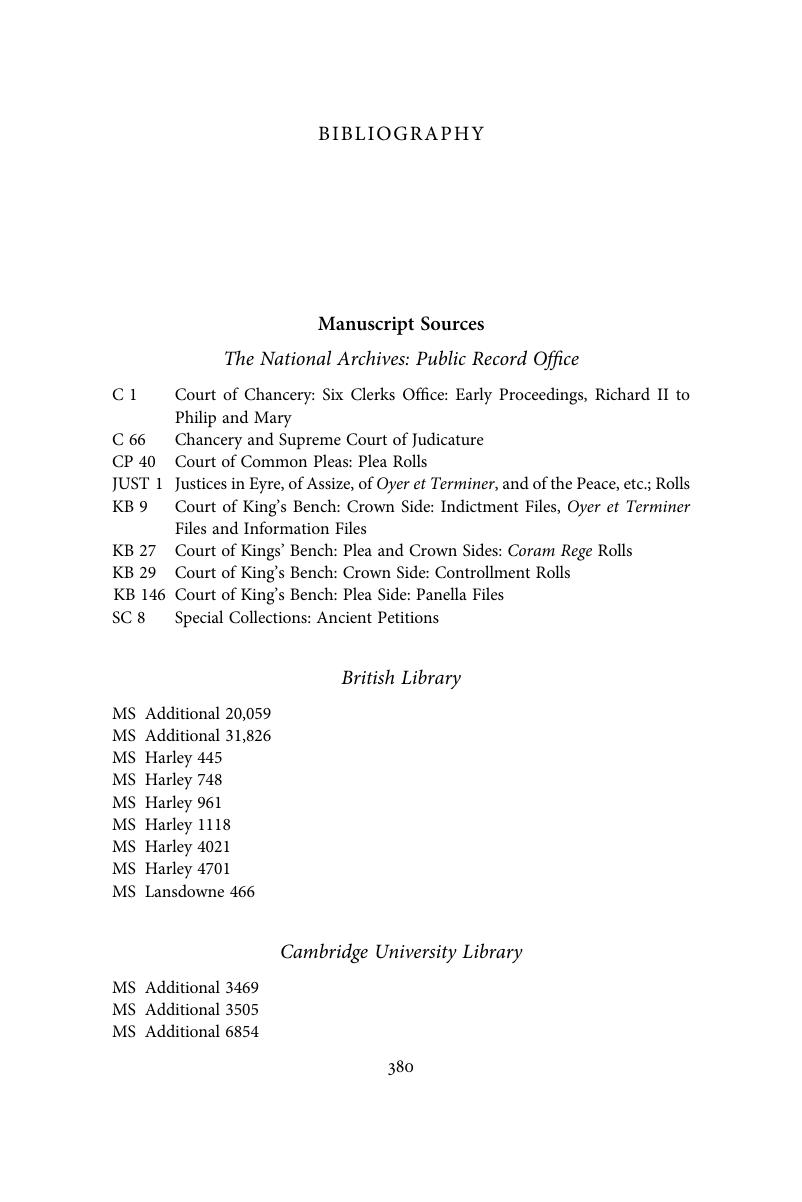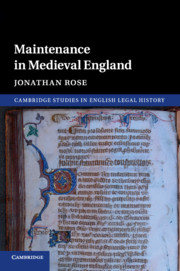Book contents
- Maintenance in Medieval England
- Cambridge Studies in English Legal History
- Maintenance in Medieval England
- Copyright page
- Contents
- Figures
- Tables
- Preface and Acknowledgments
- Abbreviations
- Statutes and Other Legislation
- 1 Introduction
- 2 The Evolution of Social Norms Relating to the Assistance of Others
- 3 Legal Responses to the Corruption of Justice
- 4 The Early Litigation, 1272–1327
- 5 Efforts to Deal with Corruption of Justice in the Reign of Edward III
- 6 Criminal and Civil Litigation in the Reign of Edward III
- 7 Maintenance and Medieval Literature
- 8 Changes in the Late Medieval Period
- 9 The Development of the Law of Maintenance
- 10 The Development of the Law of Maintenance
- 11 Livery
- 12 Achieving the Legislative Objectives of the Maintenance Statutes
- 13 Conclusion
- Book part
- Bibliography
- Index
- References
Bibliography
Published online by Cambridge University Press: 08 June 2017
- Maintenance in Medieval England
- Cambridge Studies in English Legal History
- Maintenance in Medieval England
- Copyright page
- Contents
- Figures
- Tables
- Preface and Acknowledgments
- Abbreviations
- Statutes and Other Legislation
- 1 Introduction
- 2 The Evolution of Social Norms Relating to the Assistance of Others
- 3 Legal Responses to the Corruption of Justice
- 4 The Early Litigation, 1272–1327
- 5 Efforts to Deal with Corruption of Justice in the Reign of Edward III
- 6 Criminal and Civil Litigation in the Reign of Edward III
- 7 Maintenance and Medieval Literature
- 8 Changes in the Late Medieval Period
- 9 The Development of the Law of Maintenance
- 10 The Development of the Law of Maintenance
- 11 Livery
- 12 Achieving the Legislative Objectives of the Maintenance Statutes
- 13 Conclusion
- Book part
- Bibliography
- Index
- References
Summary

- Type
- Chapter
- Information
- Maintenance in Medieval England , pp. 380 - 397Publisher: Cambridge University PressPrint publication year: 2017



